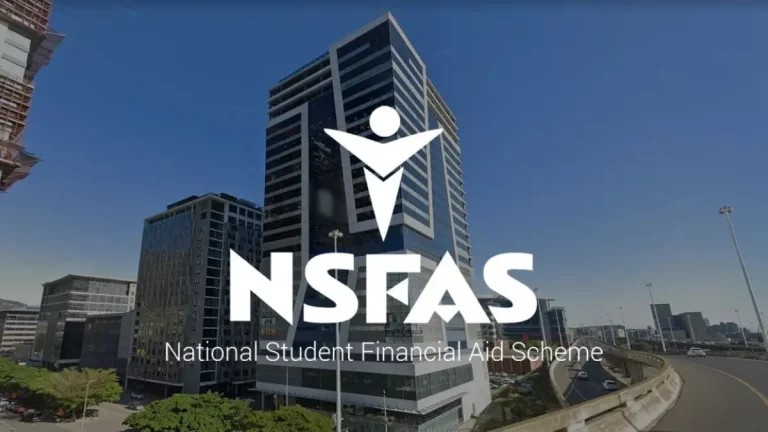More than 100,000 TVET and university students risk losing financial aid in 2026 as the National Student Financial Aid Scheme (NSFAS) faces a funding shortfall nearing R14 billion. The crisis threatens to destabilize South Africa’s higher education system, with Gauteng’s major institutions expected to feel the impact first.
Thank you for reading this post, don't forget to subscribe!ALSO READ: Top Tips for a Successful NSFAS Application
Nsfas Faces R14 Billion Budget Shortfall
The 2026 budget will only support about 520,000 students, even though nearly 620,000 qualify for assistance. This means roughly 100,000 students who meet the criteria may be excluded unless urgent funding is secured.
A recent financial report showed that NSFAS’s deficit rose from R11.6 billion to R14 billion after second-semester registrations in 2025. The increase was linked to rising student numbers, higher tuition fees, and poor financial management.
To address the crisis, the Department of Higher Education and Training (DHET) formed a technical team with the National Treasury, the Presidency, and the Department of Planning, Monitoring and Evaluation. The team’s goal is to create a sustainable higher education funding model and present its recommendations to Cabinet before the end of 2025.
Thousands of Students Could Lose Support
The funding gap has left tens of thousands of students uncertain about their future. Many depend on NSFAS for tuition, accommodation, and living allowances. Without this support, some will be unable to register or continue their studies in 2026.
According to internal projections, the deficit will affect both new and returning students. Those already in the system are likely to be prioritized, leaving new applicants at risk of exclusion. Education experts warn that the crisis could spark protests, delayed registrations, and growing pressure on universities to provide emergency relief.
Structural Problems Behind the NSFAS Crisis
The current financial strain stems from long-standing structural problems. Nsfas began facing difficulties after the shift from student loans to full bursaries in 2017. The move, though intended to improve access to higher education, disrupted the scheme’s loan recovery process.
As a result, loan collection systems collapsed, leaving more than R45 billion in unpaid student loans unrecovered. Despite new efforts to trace and recover these funds, progress has been limited.
Administrative problems such as weak governance, system failures, and corruption allegations have further damaged public trust. Combined with rising enrolments and inflation-driven tuition increases, these issues have left NSFAS in a fragile financial position.
Gauteng Universities Brace for Impact
Gauteng, home to the University of Johannesburg (UJ), Tshwane University of Technology (TUT), Wits University, and Vaal University of Technology (VUT), will be hit hardest if NSFAS fails to secure additional funds.
These institutions depend heavily on NSFAS to support thousands of students from low-income families. Without the funding, universities could face widespread deregistrations, higher dropout rates, and a surge in financial exclusions.
The impact will extend beyond campuses. Student housing providers, transport operators, and small township businesses that rely on student spending will also suffer. The crisis could undo years of progress made to expand access to higher education for historically disadvantaged communities.
Treasury’s Role in Preventing a Collapse
The Medium-Term Budget Policy Statement (MTBPS) will determine whether NSFAS receives the funds it needs to continue supporting all qualifying students. While Nsfas has requested an emergency allocation, Treasury has not confirmed whether it will provide additional support.
Sector analysts believe Treasury may instead recommend reforms to control student enrolment and tighten eligibility requirements. Critics warn that such measures would limit access for poor students and contradict South Africa’s goal of equal education opportunities.
Education advocates are pushing for a sustainable funding model that includes better debt recovery, partnerships with the private sector, and stronger financial oversight.
The Economic Impact on Gauteng
Education is central to Gauteng’s economy, which relies on a skilled workforce to sustain growth and innovation. If Nsfas fails to meet its commitments, the long-term consequences could include skills shortages, higher unemployment, and widening inequality.
Each year, thousands of young people from Gauteng’s townships and rural areas rely on NSFAS to escape poverty through education. Without financial aid, their prospects and the province’s economic development will be at risk.
A decline in student spending will also hurt local economies. Businesses that serve the university community, including accommodation providers, food outlets, and transport services, could experience significant losses.
Rebuilding Accountability and Trust
The NSFAS crisis highlights the urgent need for better management and transparency. In recent years, the scheme has faced multiple complaints about payment delays, technical failures, and poor communication.
To restore confidence, Nsfas must modernize its systems, improve coordination with universities, and ensure that payments reach students on time. A clear accountability plan and regular progress reporting could help rebuild public trust and stabilize operations.
The Future of Higher Education
This crisis marks a turning point for South Africa’s higher education system. It tests the country’s commitment to making education affordable and accessible for all. The decisions made now will determine whether tertiary education remains a pathway to opportunity or becomes a privilege reserved for a few.
In Gauteng, where demand for higher education keeps growing, the stakes are especially high. As the province that produces the largest number of graduates, Gauteng’s education stability is essential to the country’s economic and social progress.
The Way Forward
To protect students and ensure NSFAS’s survival, stakeholders are calling for greater collaboration between government, universities, and the private sector. Solutions being considered include:
- Strengthening loan recovery through cooperation with SARS and credit bureaus
- Introducing a blended funding model that combines bursaries with income-based loan repayments
- Encouraging private sector partnerships to fund critical study areas
- Improving monitoring and accountability to prevent corruption and mismanagement
Addressing these issues will not only stabilize NSFAS but also safeguard the education of hundreds of thousands of students.
Investing in Education Is Investing in the Nation
The NSFAS crisis underscores a crucial truth: education funding is not an expense but an investment in South Africa’s future. For Gauteng and the country at large, ensuring that every qualifying student can study without financial barriers is vital to building a stronger, more inclusive economy.
As the government weighs its options, students and institutions across South Africa are waiting for answers. The country’s youth and its promise of equality through education hang in the balance.




